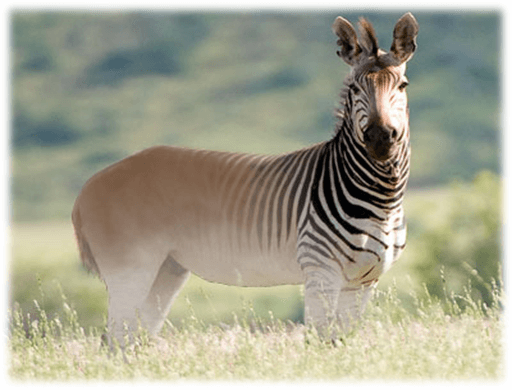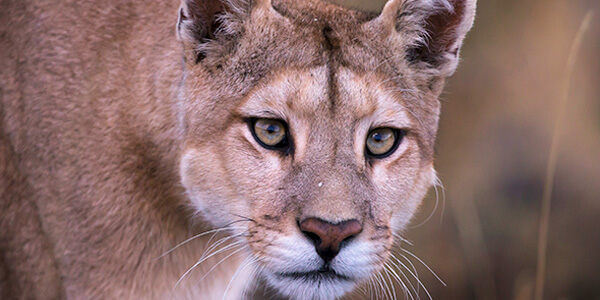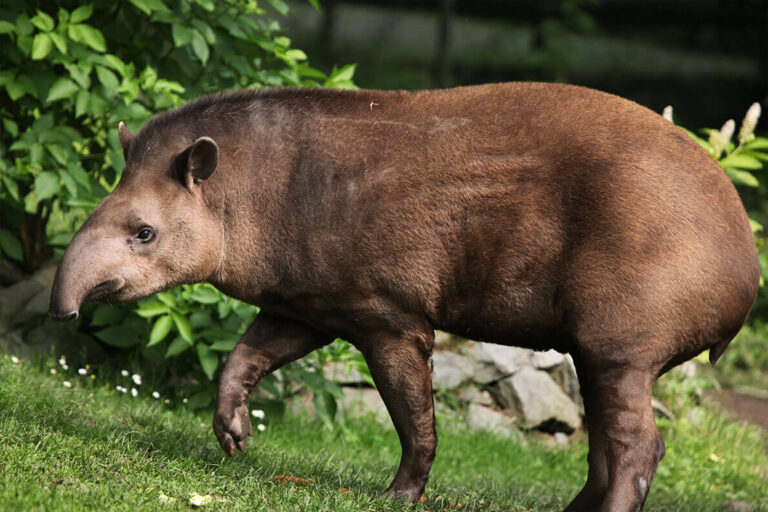Quagga: The Extinct Zebra-Like Equid
The Quagga was a unique and fascinating animal that resembled a cross between a zebra and a horse. Once found in abundance across the plains of South Africa, this distinctive equid is now known primarily through historical records, museum specimens, and recent scientific efforts to revive its genetic legacy.
Contents
Scientific Classification
- Kingdom: Animalia
- Phylum: Chordata
- Class: Mammalia
- Order: Perissodactyla
- Family: Equidae
- Genus: Equus
- Species: Equus quagga quagga
The Quagga was a subspecies of the plains zebra, distinct due to its unique coat pattern and behavior.
Physical Characteristics

The Quagga had a striking appearance that distinguished it from other zebras:
- Size: Approximately 8 to 8.5 feet long and 4.5 feet tall at the shoulder, weighing around 500-700 pounds.
- Coat: The front part of the Quagga’s body featured distinctive black and white stripes, while the back half was a solid brown, similar to a horse. The stripes gradually faded as they moved towards the rear, creating a unique gradient effect.
- Head: It had a long face, similar to other equids, with short, upright ears.
- Tail and Legs: The Quagga’s tail and legs were primarily solid, lacking the stripes that are characteristic of zebras.
Habitat
The Quagga was primarily found in the dry grasslands and savannas of South Africa, particularly in the Karoo region and the southern parts of the Orange Free State. It preferred open plains and areas with abundant grass to graze freely.
Behavior

- Social Structure: Quaggas were social animals in herds of 30 to 50 individuals. They formed family groups consisting of a dominant stallion, several mares, and their foals.
- Activity: These animals were primarily diurnal, grazing most of their day and resting during the hottest part of the day.
- Communication: Quaggas communicated through vocalizations, body language, and facial expressions, similar to modern zebras.
Diet
- Primary Diet: The Quagga was an herbivore that fed mainly on grasses. Its diet included various types of short grasses, which were abundant in its natural habitat.
- Feeding Habits: Like other equids, Quaggas were non-ruminant grazers, meaning they quickly consumed large amounts of food and processed it through a simple digestive system.
Reproduction
- Breeding Season: Breeding occurred year-round, but most births happened during the rainy season when food was plentiful.
- Gestation: The gestation period for Quaggas was around 12 to 13 months.
- Offspring: A single foal was typically born, staying with its mother for up to a year before becoming more independent.
Predators
- Natural Predators: The primary predators of the Quagga included lions, hyenas, and wild dogs, which preyed on young, sick, or old individuals.
- Human Impact: Humans were the most significant threat to the Quagga. Excessive hunting for meat hides and sport and competition for grazing land with livestock contributed to its extinction.
Conservation Status
- Extinct: The Quagga was declared extinct in the late 19th century, with the last known individual dying in captivity at the Amsterdam Zoo in 1883. The loss of its natural habitat and intense hunting pressures were the primary reasons for its rapid decline.
Interesting Facts
- Quagga Project: Modern conservationists are attempting to bring back the Quagga through selective breeding of plains zebras that exhibit similar stripe patterns. This project, known as the Quagga Project, aims to restore some of the Quagga’s distinctive characteristics to the wild.
- Name Origin: “Quagga” is derived from the Khoikhoi word for zebra and mimics the animal’s call, which sounds like “kwa-ha-ha.”
- Mitochondrial DNA: The Quagga was one of the first extinct animals to have its DNA studied, helping scientists better understand its relationship with other zebras.
Evolutionary History
The Quagga evolved as a distinct subspecies of the plains zebra during the Pleistocene epoch. It adapted to the unique environmental conditions of South Africa, developing its characteristic half-striped appearance, which likely provided camouflage in its habitat of tall grasslands.
Relationship with Humans
- Historical Uses: European settlers hunted Quaggas extensively for their meat and hides. Farmers also viewed them as pests, as they competed with livestock for grazing land.
- Extinction Impact: The extinction of the Quagga marked one of the first times humans became acutely aware of the impact of their actions on wildlife, leading to the early foundations of conservation efforts.
Conclusion
The Quagga’s extinction serves as a poignant reminder of the consequences of human exploitation of wildlife. Although the original Quagga is lost to history, modern scientific efforts like the Quagga Project keep its memory alive, providing hope that one day, the Quagga’s distinctive form might once again roam the plains of South Africa. Its story underscores the importance of conservation and the need to protect our natural heritage for future generations.
- Are Rottweilers Good With Kids? Reasons & Training Tips - 17 September 2025
- How Long Are Dogs Pregnant: Complete Guide - 16 September 2025
- German Shepherd Doberman Mix: Info, Pictures, Care & More - 11 September 2025







